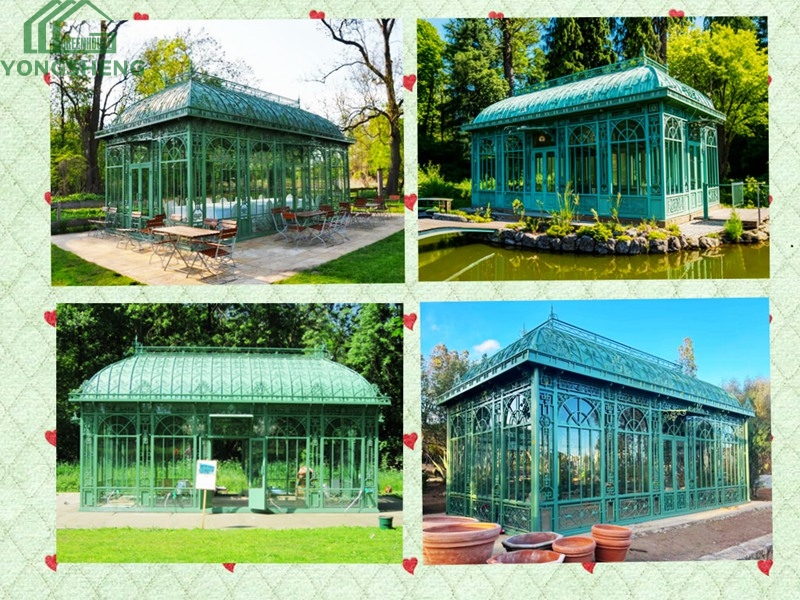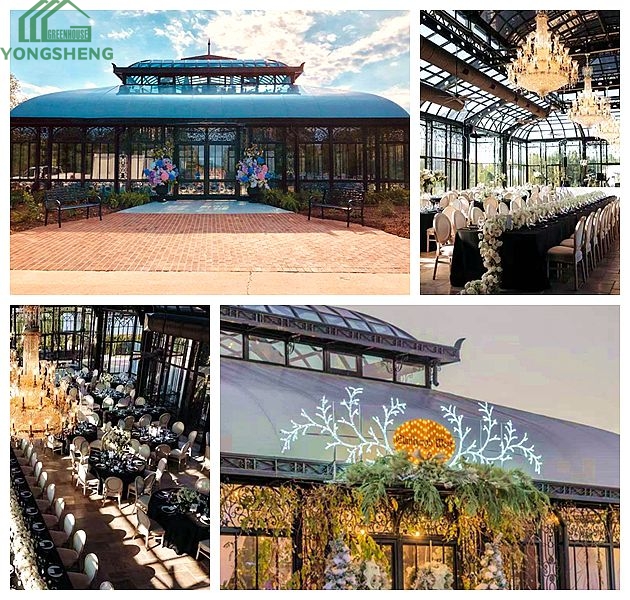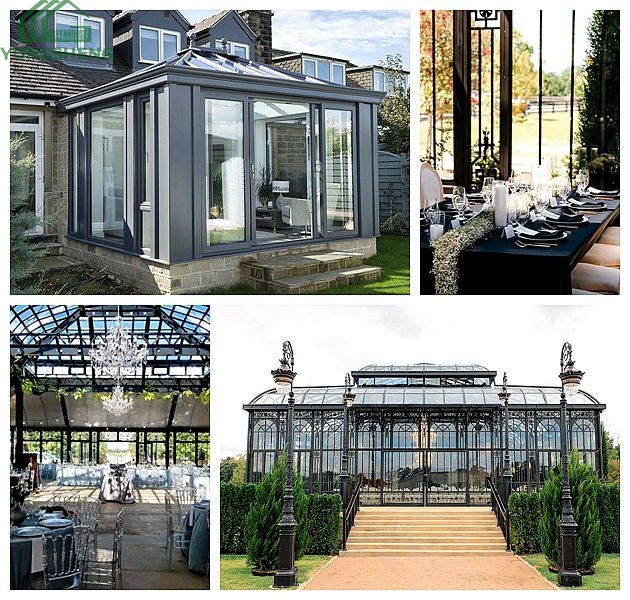
How to Choose the Perfect Location for Your Conservatory

Adding a conservatory greenhouse to your home is an exciting way to blend indoor comfort with the beauty of the outdoors. Whether you’re drawn to the classic charm of a Victorian style conservatory or the sleek elegance of a glass conservatory, selecting the right location is key to maximizing its potential. A well-placed conservatory not only enhances your living space but also adds value to your property. In this guide, we’ll explore the essential factors to consider when choosing the perfect location for your conservatory, ensuring it becomes a functional, beautiful, and timeless addition to your home.
1. Sunlight Exposure: Harnessing Natural Light
One of the most critical factors in choosing the perfect location for your conservatory greenhouse is sunlight exposure. Conservatories are designed to bring the outdoors in, and natural light plays a significant role in creating a bright, inviting space.
- Orientation: The direction your conservatory faces will determine how much sunlight it receives. A south-facing conservatory will enjoy sunlight throughout the day, making it ideal for growing plants or creating a warm, cozy retreat. However, it may require shading solutions to prevent overheating in summer. A north-facing conservatory will receive softer, indirect light, making it perfect for a cooler, more consistent environment. East-facing conservatories capture the morning sun, while west-facing ones bask in the afternoon and evening light.
- Seasonal Changes: Consider how sunlight patterns change throughout the year. A location that receives ample light in winter but can be shaded in summer will ensure year-round comfort.
- Glazing Options: If your chosen location doesn’t receive ideal sunlight, consider using advanced glazing techniques. For example, a glass conservatory with low-emissivity (Low-E) glass can help regulate temperature and light levels.
2. Accessibility: Seamless Integration with Your Home
A conservatory should feel like a natural extension of your home, not an isolated addition. Accessibility is crucial for ensuring it becomes a functional part of your daily life.
- Proximity to Living Spaces: Ideally, your conservatory should be easily accessible from key living areas such as the kitchen, dining room, or living room. This creates a seamless flow between indoor and outdoor spaces, making it perfect for entertaining or relaxing.
- Door Placement: Consider how doors and entryways will connect the conservatory to the rest of your home. French doors or sliding glass doors can enhance accessibility while maintaining aesthetic appeal.
- Traffic Flow: Think about how the conservatory will be used. If it’s intended as a dining area, ensure it’s close to the kitchen. If it’s a relaxation space, position it near quieter areas of the home.
3. Views and Privacy: Balancing Beauty and Seclusion
A conservatory is designed to bring the outdoors in, so the views it offers are just as important as the structure itself. However, privacy is equally crucial, especially if you live in a densely populated area.
- Garden Views: Position your conservatory to take advantage of the best views your garden or yard has to offer. Whether it’s a lush lawn, a flower bed, or a water feature, the right view can transform your conservatory into a serene retreat.
- Privacy Considerations: If your property is overlooked by neighbors or faces a busy street, consider using frosted glass, blinds, or strategic landscaping to maintain privacy without sacrificing light.
- Architectural Harmony: A Victorian style conservatory with intricate detailing can become a focal point in your garden. Ensure its placement complements the overall layout and design of your outdoor space.
4. Shelter from the Elements: Protecting Your Conservatory
While conservatories are designed to withstand the elements, their location can significantly impact their durability and comfort.
- Wind Exposure: Avoid placing your conservatory in areas prone to strong winds, as this can affect its structural integrity and make it less comfortable to use. If wind is unavoidable, consider installing windbreaks such as hedges or fences.
- Shade and Overheating: While sunlight is essential, too much direct sun can cause overheating. Use shading solutions like retractable awnings, blinds, or planting deciduous trees that provide shade in summer and allow light in winter.
- Rain and Drainage: Ensure the location has proper drainage to prevent water pooling around the conservatory. This is especially important for a glass conservatory, where water stains can detract from its beauty.
5. Space and Size: Finding the Right Fit
The size of your conservatory and the available space on your property will play a significant role in determining its location.
- Proportions: A Victorian style conservatory often features intricate designs and may require more space than a modern glass conservatory. Ensure the chosen location can accommodate the size and proportions of your desired design.
- Garden Space: Consider how the conservatory will impact your garden. A large conservatory might dominate a small yard, while a smaller one could get lost in a sprawling landscape.
- Local Regulations: Check local building codes and regulations to ensure your conservatory complies with size and placement restrictions.
6. Purpose and Functionality: Tailoring the Location to Your Needs
The intended use of your conservatory will influence its ideal location.
- Gardening and Plant Growth: If you’re building a conservatory greenhouse for plants, choose a location with optimal sunlight and ventilation. South or east-facing positions are often ideal.
- Living and Entertaining: For a conservatory designed as a living or dining space, prioritize accessibility, views, and comfort. A west-facing conservatory can create a stunning backdrop for evening gatherings.
- Relaxation and Wellness: If your conservatory is intended as a relaxation space, consider a quieter, more secluded location with calming views.
7. Architectural Style: Complementing Your Home
The design of your conservatory should harmonize with your home’s architecture.
- Victorian Style Conservatory: Known for their ornate details and steep roofs, Victorian conservatories pair beautifully with period homes or traditional architecture. Ensure the location enhances their classic charm.
- Glass Conservatory: Sleek and modern, a glass conservatory suits contemporary homes. Its location should emphasize clean lines and open spaces.
- Blending Styles: If your home has a unique architectural style, choose a conservatory design and location that complements it without overwhelming the existing structure.
8. Budget and Practical Considerations
Finally, practical factors such as budget and construction requirements will influence your decision.
- Site Preparation: Some locations may require more extensive groundwork, such as leveling or drainage improvements, which can add to the cost.
- Utilities: If you plan to heat or cool your conservatory, consider its proximity to existing utilities like electricity and plumbing.
- Future Plans: Think about how the conservatory fits into your long-term plans. Will it limit future expansions or garden changes?
Conclusion
Choosing the perfect location for your conservatory greenhouse, Victorian style conservatory, or glass conservatory requires careful consideration of sunlight, accessibility, views, and functionality. By taking the time to evaluate these factors, you can create a space that not only enhances your home but also brings joy and comfort for years to come. Whether you’re dreaming of a lush plant-filled retreat or a stylish entertaining area, the right location will ensure your conservatory becomes a cherished part of your home.
Why Choose US?
- ● As the first manufacturer in China to introduce the Victorian conservatory design from Europe, we have 36 years of production experience since 1988, and our products are distributed in 68 countries.
- ● We have a professional team of 8 conservatory design engineers and 60 production workers. We are equipped with 2 hot-dip galvanizing machines, 2 steel shot blasting machines, and 1 spray line.
- ● Our professional design team can provide theoretical calculation data support for wind pressure resistance, earthquake resistance, and snow resistance of large-scale steel structure conservatories.
- ● Strict quality control. 8 inspection stages: raw material inspection, cutting and blanking size inspection, welding quality inspection, hot-dip galvanizing quality inspection, spray quality inspection, assembly quality inspection, and packaging quality inspection. Ensuring smooth assembly of the products, no rust, no leakage, and compliance with customer national standards.
- ● We cooperate with many well-known architectural design companies worldwide.
- ● Customized services. We can customize according to customer designs and dimensions. We also provide supporting facilities such as electric sunshades and air conditioners.
- ● We offer installation dispatch services, inspection services, and free replacement of parts. We also present high-value exquisite gifts.
- ● Video factory tour. You can view the entire production process.




